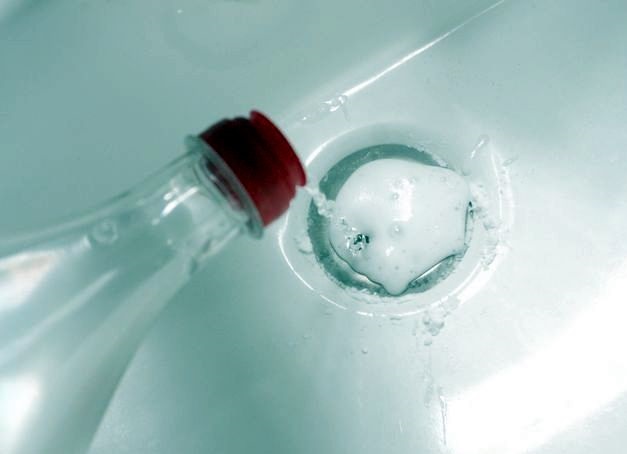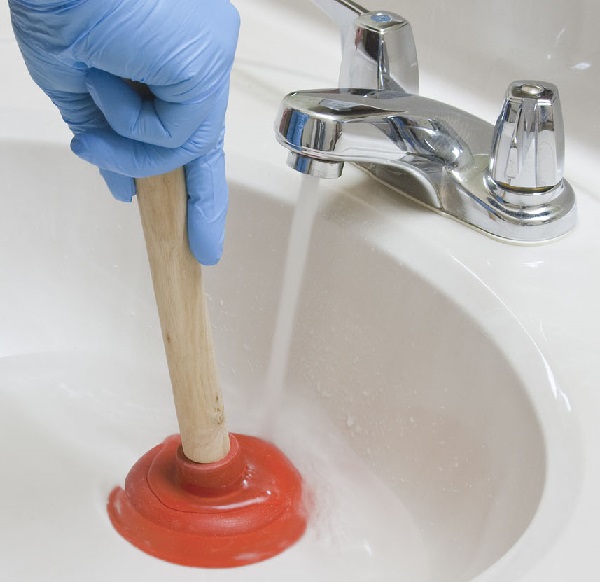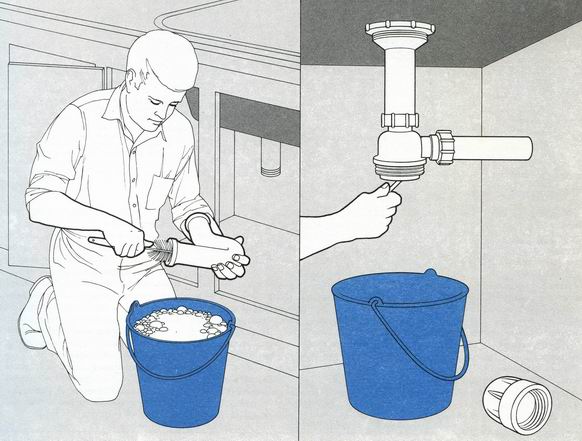A clogged kitchen sink is not uncommon: water leaves the sink slower and slower each time, and an unpleasant, persistent smell comes from the drain. Sooner or later, the pipe becomes completely clogged and requires cleaning. There is a whole arsenal of tools available at home that can quickly solve the problem. In most cases, there is no need to invite a plumber - you can get rid of local blockages yourself.
Reasons. The following can lead to blockage:
- “Plugs” from foreign objects that accidentally fell into the drain: scraps of food packaging, vegetable or fruit peelings, food debris.
- Fat and oil that do not enter the sewer system, but settle on the inner surface of the pipes. Over time, the sticky layer increases and the clearance decreases, preventing waste from passing through the pipe unhindered.
- Errors during the installation of plumbing equipment, including the wrong angle when installing pipes.
Store and folk remedies
Products that help clear a clog in the sink can be found in any hardware store: take a closer look at the brands “Mr. Muscle,” “Mole,” “Domestos,” and Tiret. Such “chemistry” includes strong alkalis and acids that break down fat, as well as dissolving “plugs” of organic and inorganic origin.
The method of using caustic liquids usually comes down to one thing: pour the required amount of the product into the drain (the exact dosage is indicated in the instructions for each specific composition), and after a certain time, flush the pipes with hot water.
To avoid causing inconvenience to yourself and your household, pour the gel at night. In the morning, all that remains is to flush the hot water and wash the sink.
Please note that the chemicals are quite aggressive towards any surface. Do not use the product more often than once every 3-4 months, otherwise the pipes will quickly wear out. While working, wear household gloves and do not allow liquid to come into contact with mucous membranes. Store the “fat splitter” in a tightly closed container, out of the reach of children and pets.
Traditional methods
Among the folk methods for clearing a clogged sink, the following are popular among housewives:
1. Dissolve 3-4 tbsp in a glass of hot water. spoons of table salt. Pour the resulting solution into the drain; after 5-10 minutes, pour boiling water over the drain or remove the softened “plug” with a plunger.
2. Heat 5-6 tbsp in a frying pan. spoons of baking soda, let cool. Prepare a soda solution (you will need 250 ml of boiling water), mix thoroughly so that there is no suspension. Pour the solution into the drain and run hot water after 10 minutes.
3. Pour 4-5 tbsp into the drain. spoons of baking soda, pour a glass of 9% table vinegar. Wait until the substances react and dissolve the fat (the process takes about 15-20 minutes). Run hot water over the drain for 5 minutes.
 Baking soda and vinegar are the most affordable solution
Baking soda and vinegar are the most affordable solution Don't confuse vinegar and acetic acid! The latter corrodes chrome, brass and metal-plastic pipes, significantly shortening their service life.
4. The above solution, supplemented with any washing powder, helps to remove blockages in the sink. Together with soda, pour 4-5 tbsp into the pipe. spoons of powder, pour 9% table vinegar and leave for 20 minutes.
5. In the case when stagnation of water is caused by a “plug”, you can use a plunger or a plumbing cable.
 Plunger - a universal mechanical method for clearing blockages
Plunger - a universal mechanical method for clearing blockages 6. If all means and methods have been tried, but the result is “zero”, you will have to disassemble the siphon: waste accumulates in the curved pipe over time, interfering with the normal outflow of water.
 The siphon gets clogged most often
The siphon gets clogged most often Preventing kitchen sink clogs
- Install a special metal or plastic mesh in the drain that does not allow food debris to pass through.
- Do not pour leftover grease or cooking oil down the drain: pour waste into an unnecessary container or sealed bag and dispose of it.
- If you are replacing pipes, make a choice in favor of metal-plastic ones: unlike cast iron ones, if they become overgrown with fat, it is less intense.
- Clean dishes from food residues and grease with paper napkins before washing.
- Use grease-dissolving dishwashing detergents.
- Periodically clean the pipes with a clog remover (according to the instructions), a solution of baking soda (4 tablespoons per glass of hot water) or at least boiling water.